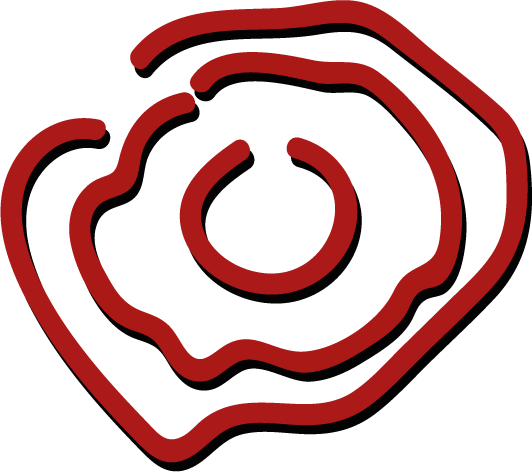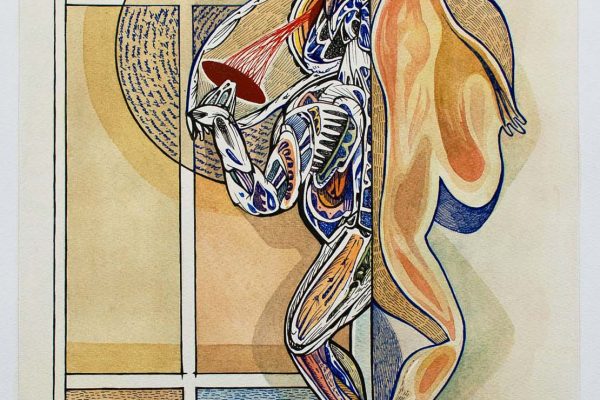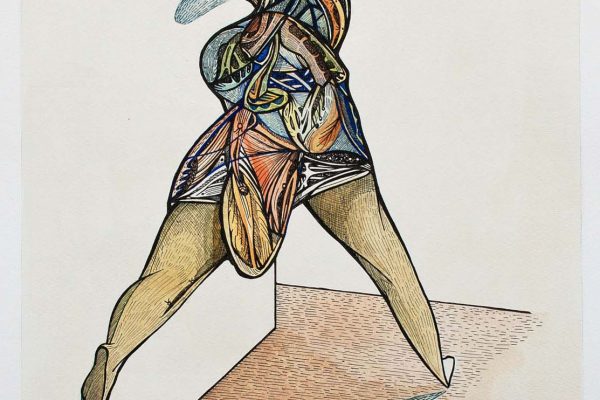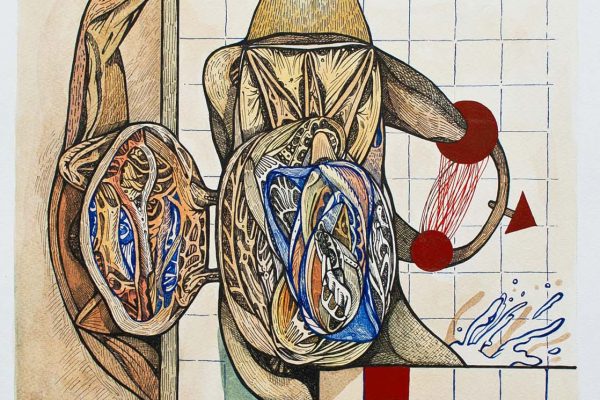Cities, villages, houses, apartments or just a single room – these small and large spatial constraints are the few stable junctions in the fast and steady changing structure of our lives. May every place change, get bigger, smaller, older or even forgotten, as long as it continues to exist as a concrete living space it will bring us together, protect us and make for the framework of our existence. It welcomes us and lets us go and will be around even if we have long been gone. But what happens when we leave something behind in every place we have been to; if every space is a vessel that preserves our thoughts, ideas, dreams and fears? And what if it was possible to give expression to these perceptions?
When Eduard Bigas (born in 1969) saw the gloomy black and white photographs of the Dessau Bauhaus master houses by Lyonel Feininger for the first time, he was like hypnotized. The thought that Klee and Kandinsky were active together in these buildings of which Feininger has shot said photos, haunted his mind: ‘I want to be in his spot.’ Said and done. In autumn 2014 Bigas went to Dessau for a week in order to live in the Bauhaus studio and to follow in the footsteps of Feininger, Kandinsky and Klee. ‘As an observer on his quest for his own experience’ it was not about an art-historic analysis of the place to Bigas, but rather a creative examination of the site itself, as workplace, source of inspiration, expression of an artistic concept and bearer of a past that has now become part of Bigas’ own present – however, it turned out entirely different from what he had expected: ‘I was quite disappointed when I saw Kandinsky’s studio – it was more like a dentist’s waiting room. I was naive thinking that I would find the same atmosphere that it had back then.’ And yet, he did not have to wait long before he was struck by inspiration and Bigas created expressive drawings by letting his hands dash about the wooden surface of the original Bauhaus table. Their clear contours and colors tell of his encounter with the place. With a precise, almost carved duct, the artist sketched his Triadischer Baum, which vibrantly towers in front of the cold and dead Dessau Bauhaus buildings. This organic tree structure, which is almost a bit threatening for its overwhelming vitality, is in clear contrast to the stylized silhouette of the Bauhaus blocks standing side by side. It is this very uninhibited organic vibrancy that also characterizes the drawing Wassily. We see the energetic structure, the body and spirit surface of Wassily Kandinsky, who taught at the Bauhaus between 1922 and 1933, striding to class with firm and quick steps. It is not the account of a lifelike physiognomy that appeals to Bigas, but the illustration of an internal concept or power of a place or a person in relation to the space the artist encloses in relentless contour lines and thoroughly phrased fields of colors, hachures and letters.
In order to experience the special spirit of the Bauhaus buildings in other places, Bigas also visited the former Bauhaus-Bundesschule in Bernau a little later. Having arrived there he was struck by the unexpected: ‘My feelings there were very harsh. Never before had I felt this isolated and alone with my work … I hardly left my room. These ten days seemed to be endless. The forest in front of my window was my only connection with the outside world.’ When the artist took a bath alone in the old tub in the abandoned building, he felt intimidated by the place’s history: in May 1933 the Nazis took the school over and used it as a training center for members of SS and Gestapo, in World War II it served as a military meeting and planing center. Suddenly the sound of the splashes of the bathwater that is gradually cooling down is accompanied by the melancholic sound of a dark past echoing through the room. It was these impressions that led to, among others, the two drawings Mortal ut plurimum and Arbeit. In Mortal ut plurimum a mighty figure welding a gun strides across the paper, an upper body shot through by three bullets splits apart from the creatures hip, the arms raised and with an inscrutable face. The outline of the Bundesschule rises in cold and graphic clarity in the background. While Bigas adds a human-inhuman body to the latently threatening atmosphere of Bernau, Arbeit may likewise be seen as a reference to the surrounding Bauhaus space, however, first and foremost it is a self-portrait of the artist at work. Bigas sits on a Bauhaus cantilever chair facing the observer in profile, appearing like a permeable figure, open for impressions. Shielded by a warm and yellow aureola, inspiration and the place’s energy pours in on him, out of him, and makes him draw, draw, draw (‘Dibuixo, dibuixo, dibuixo…’).
This artistic capture of – as Bigas calls it – the places’ spirit, fascinates the artist beyond the Bauhaus. Even though the native Catalan has worked in big cities like Sydney and New York, has lived in London and has now made Berlin his new home, it is more the remote and isolated places by which Bigas feels most attracted. This is why he fled from noisy Berlin to the vast and calm Uckermark region: ‘This time I wanted to draw the people who live in this place – people of which I know that they exist, but who I never see on the village’s abandoned streets. People there stay inside, they are born in this place and they die there … they form a true unity with their village.’ Bigas touches this close connection in the drawings for Torsten Triology. The figure and its immediate surrounding space (and nature) are one, creating a dynamic structure by permeating one another, eventually they make for the very unity that Bigas seeks himself. When the artist encounters the place’s spirit in the process of artistic creation, he becomes one with it for a short time. He takes it in, disperses in space, concentrates again, lets it flow and draws, draws, draws … And then he just leaves the place, leaves a part of him behind, takes something new with him in return and creates works that achieve something we hardly achieve in hasty everyday life: an expression for all those quiet and loud, happy and sad feelings of the place, an (image) space for the sensitive and hardly audible language of our coats and housings of wood, stone, glass and concrete. And then – then Bigas just moves on: ‘Dessau, Bernau or nowhere places – these are all just stops on my journey. I love to discover the places’ spirit.’
Exhibition from 23rd NOVEMBER 2014 – 24th JANUARY 2015
ARTIST



